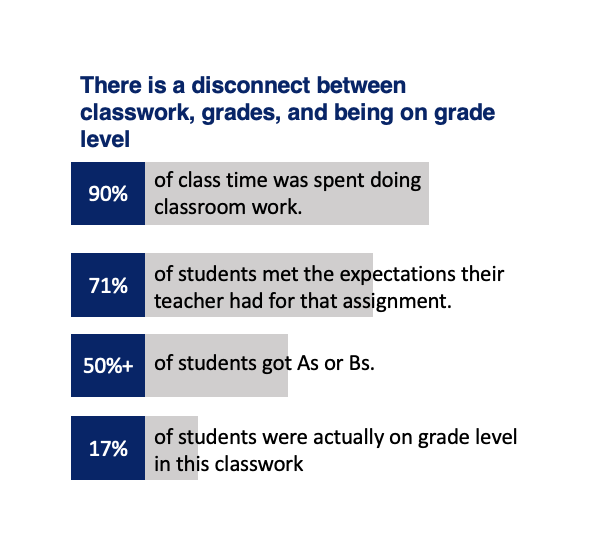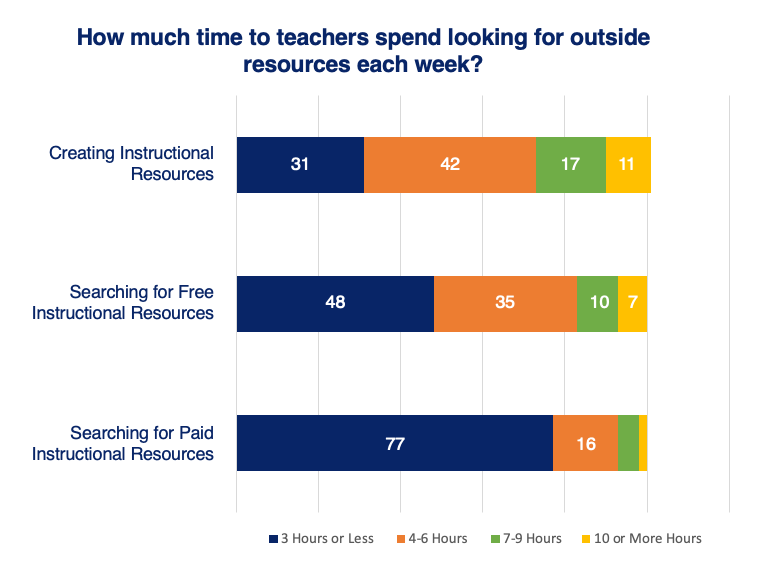Curriculum Has a High ROI in Improving Student Outcomes
The following is written testimony by Texas 2036 Senior Policy Advisor Mary Lynn Pruneda, which was delivered to the House Public Education Committee on July 26, 2022.
Over the past several sessions, Texas has invested heavily in data-driven and equitable strategies to improve student outcomes. At Texas 2036, we believe that the Committee’s examination of curriculum is the next logical step in this good work. Curriculum is an important, though frequently ignored, policy area for our state.
In Texas, the policy position of the state is a contradiction.
We place considerable pride on our standards adoption, bucking national standards in favor of our own, unique Texas Essential Knowledge and Skills, or TEKS. At the same time, we only require textbooks to meet 50% of the TEKS in our textbook adoption process.
Why does the state invest so much time, talent, and treasure into a standards setting process that it loosely requires our curriculum to follow?
In these written remarks, we will provide the committee data on the current classroom curricular experience, the importance of high-quality curriculum, and then potential policy solutions for the committee to consider. At Texas 2036 we believe that the adoption of high-quality curriculum should be a focus for the committee in the coming legislative session because:
- Data suggests that the current classroom experience of students is misaligned to success in college and career.
- Data suggests that investing in high-quality curriculum is a reliable strategy to improve student outcomes and teacher quality of life.
- The availability of Elementary and Secondary School Emergency Relief, or ESSER, and other one-time funds provides fiscally prudent timing for a transition to higher quality materials.
1. Data suggests that current classroom curriculum and expectations of students are misaligned to success in college and career.
TNTP, formerly The New Teaching Project, is an organization committed to supporting teachers and school systems in implementing high-quality practices in the classroom. In a large-scale survey by TNTP of over 20,000 student work samples, 5,000 student assignments, and nearly 1,000 lessons, they found a very concerning disconnect between the work students are asked to do in class and what would be grade-level appropriate for those students.
 90% of class time was spent on classwork, 71% of students in classrooms met expectations that their teacher had for that assignment, more than 50% received As or Bs, but only 17% were actually on grade level in the classwork that they were completing. When the No Child Left Behind Act was passed, it required all states to take the National Assessment of Educational Progress, or NAEP, exam. This showed a troubling trend nationally: states were lowering the expectations for students on their state assessments. This came to be known as the “Honesty Gap.” Consequently, there was a national movement to close this gap between NAEP grade level expectations and the expectations on state assessments.
90% of class time was spent on classwork, 71% of students in classrooms met expectations that their teacher had for that assignment, more than 50% received As or Bs, but only 17% were actually on grade level in the classwork that they were completing. When the No Child Left Behind Act was passed, it required all states to take the National Assessment of Educational Progress, or NAEP, exam. This showed a troubling trend nationally: states were lowering the expectations for students on their state assessments. This came to be known as the “Honesty Gap.” Consequently, there was a national movement to close this gap between NAEP grade level expectations and the expectations on state assessments.
The renewed focus on curriculum and classroom level work shows a new, possibly more insidious kind of Honesty Gap: the difference between what students are asked to do in class and college and career readiness standards. TNTP found this gap was the biggest for students of color. In their report, they found 4 in 10 classrooms with a majority of students of color never received a grade level assignment.
2. Data suggests that investing in high-quality curriculum is a cost-effective strategy to improve student outcomes and teacher quality of life.
Providing teachers and school systems across the state with access and information on high-quality curriculum is one strategy to solve the issues presented above. With higher-quality materials, teachers can close learning gaps more quickly than with lower quality materials and spend less time looking for outside resources and more time on instruction.
In the TNTP report, they found that when students who started the year behind were given grade level appropriate assignments they closed the achievement gap by 7 months.
A study by the Center for American Progress compared the return on investment of high-quality, elementary math curriculum to other popular strategies to improve student outcomes. The researchers found that the quality of curriculum could have an ROI 39 times higher than limiting classroom size.
Research on curriculum in California by the Brookings Institute further showed the deep impact that curriculum can have on student outcomes. Research in that report found that one mathematics textbook was noticeably better than others. They calculated that the impact of the better materials was about the same as “a third to a half of a standard deviation in the distribution of teacher effectiveness; thus, it is equivalent to what would be a very large change in the average effectiveness of teachers in the workforce.”
Another study in 2017 found that middle school teachers adopting a higher quality curriculum had a similar impact on student learning as moving that teacher from the 50th to the 80th percentile of teaching performance.
 High-quality curriculum is an important step in supporting the teaching profession. Primarily because providing a quality curriculum can save teachers time. Research shows that teachers spend a large amount of time creating curriculum and finding curriculum online. The chart to the right lays out how much time teachers spent looking for outside instructional resources per week according to one market analysis
High-quality curriculum is an important step in supporting the teaching profession. Primarily because providing a quality curriculum can save teachers time. Research shows that teachers spend a large amount of time creating curriculum and finding curriculum online. The chart to the right lays out how much time teachers spent looking for outside instructional resources per week according to one market analysis
There will always be the desire from teachers to supplement the curriculum that they have been given by the district. Some level of personalization and supplementation is appropriate. But the question the state must answer is: are teachers spending so much time searching for and developing curriculum because the state allows districts to use low-quality products?
3. The availability of ESSER and other one-time funds provides fiscally prudent timing for a transition to higher quality materials.
Higher quality curriculum is not more expensive than the lower quality alternative. The Center for American Progress affirmed this in their work on curriculum, noting that the cost of implementing high-quality mathematics curriculum was very low. In some cases, the better curriculum was actually cheaper than the lower-quality curriculum.
What does this mean for school district and state budget officials? It means that the curriculum represents a low-cost, high-yield strategy for student outcomes improvement.
The state has a rare opportunity to change its approach to curriculum and invest in higher quality resources in the coming session.
According to the Department of Education’s ESSER tracker, only 27.7% of the $19.2 billion in Texas ESSER funds have been spent. While the state cannot tell districts how to spend their ESSER money, the state could require that districts use materials with a certain level of quality or instructional effectiveness, then encourage school districts to use their ESSER money to purchase these materials.
When the legislature is facing a budgetary surplus, as we are this session, there are often calls for increases in programmatic or entitlement funding that result in an ongoing funding obligation. But the purchase of higher quality curriculum or open educational resources is the opposite. It’s a one-time funding outlay that reaps rewards for several biennia. In addition, if the funding were partially spent on creating a permanent infrastructure to get districts better information on what materials work best, districts can direct their future Technology and Instructional Materials Allotment funding toward the purchase of better curriculum going forward.
Policy Solutions
In light of the importance of high-quality curriculum and the availability of funding this biennium, we encourage this committee to consider the following policy actions to improve curriculum in Texas public schools and, in turn, student outcomes:
- Collect information from school districts on what curriculum they use and provide this information to TEA and researchers so that the materials’ effectiveness can be evaluated for quality.
- Direct TEA or a Texas university to conduct an evaluation of the rigor of curriculum used in districts across the state for grade level appropriateness.
- Update the SBOE textbook review process to include a review of curricular quality, in addition to standards alignment, and require textbooks to cover more of the TEKS and meet certain quality standards.
- Consider avenues for the state to encourage districts to update their existing curriculum with higher quality materials and explore ways to encourage districts to utilize remaining ESSER dollars to complete these purchases.
